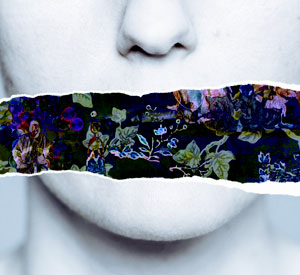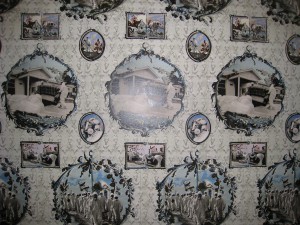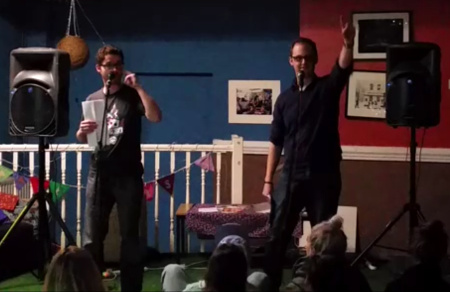Exhibition review: ‘The Walls are Talking’
Article published: Wednesday, August 25th 2010
Currently on show at The Whitworth Art Gallery is an exhibition about a medium which is not usually at the centre of attention: wallpaper. But with themes as diverse as home, identity, war and gender – as well as one startling room covered entirely in ivy – the prints displayed are far from the image of endless rolls at IKEA that immediately springs to mind.
The first works displayed quite fittingly play with the idea of home and domesticity. Hayley Tomkins’ ‘Cry Baby’ sees walls covered in repetitive screwed up baby faces on a pastel background, while Kelly Mark’s ‘12345 Wallpaper’ is a hand drawn dash tally which draws comparisons between the tedium of home life and prison. Both pieces convey feelings of suffocation and distress: a rarely represented side of routine and domesticity. The choice of mundane images on what is usually a comforting medium make the uneasy piece more confusing.
Some of the artists play with motifs and ideas from historical wallpapers. Francesco Simeti for example uses old fashioned ornate wallpapers as a backdrop on which to superimpose images taken from newspapers, a kind of subversion of the original form. In ‘Acorn’, images of menacing figures in bio-hazard suits clearing toxic waste are combined with a beautiful landscape: this contrast of the idyllic with the apocalyptic conveys a discomfiting message about our relationship with the environment and nuclear science. Such juxtapositions bring issues often thought of as outside the home into the realm of wallpaper.
On display are also many commercial prints which probe accepted societal gender norms and roles. A key example is seen in children’s Barbie and Batman wallpapers side by side; these bring home quite how powerful wallpaper can be, in this case by subconsciously reinforcing gender stereotypes. Moreover, using prints so familiar in a different context helps illustrate the medium’s insidious power as well shredding the assumption of wallpaper as a benign backdrop; for in terms of dominating the space in and time of a child’s room it is pervasive.
The choice of form of display is another nuanced factor of the presentation which attracts comment. Thomas Demand’s Ivy wallpaper is pasted over an entire high-ceilinged room, creating a hallucinatory effect of the creepers rippling and crawling up the walls as the viewer walks backwards; while other prints are hung up on the roll or cover just a small canvas. Obvious logistical limitations make it impossible to display such an extensive array otherwise, however the result is that for many the full effect is lost. Even General Idea’s ‘AIDS’ is not as impressive as in previous exhibitions. The print, created in the early 1990s, is a subversion of Robert Indiana’s famous 1960s ‘Love’ screenprint which replaces the letters to spell AIDS; but occupying a mere section of the wallspace at the Whitworth its impression is far less striking.
Overall the volume of works and the significance of their social commentary outweigh the minimal space that some are afforded. Despite the depth of works not always being instantly apparent, the collection is a thought-provoking and challenging one.
Nasreen Hunaina
The Walls are Talking is on until the end of August
More: Culture, Exhibition, Manchester
Comments
No comments found
The comments are closed.





